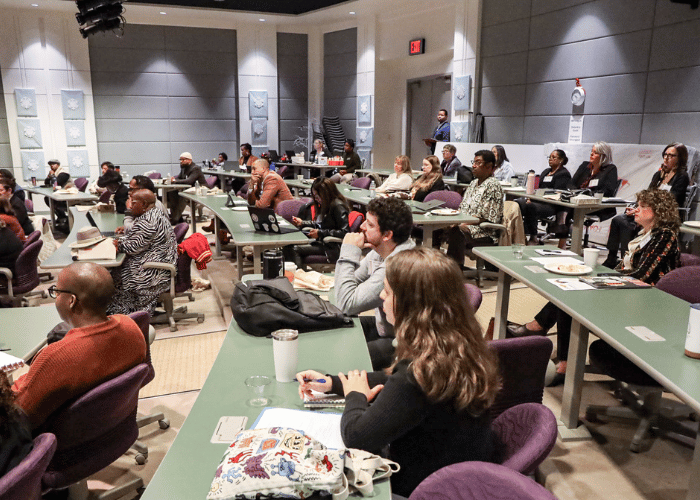Protecting and Inspiring the Cultural Heritage of the Arkansas-Mississippi Delta
By Carris Adams
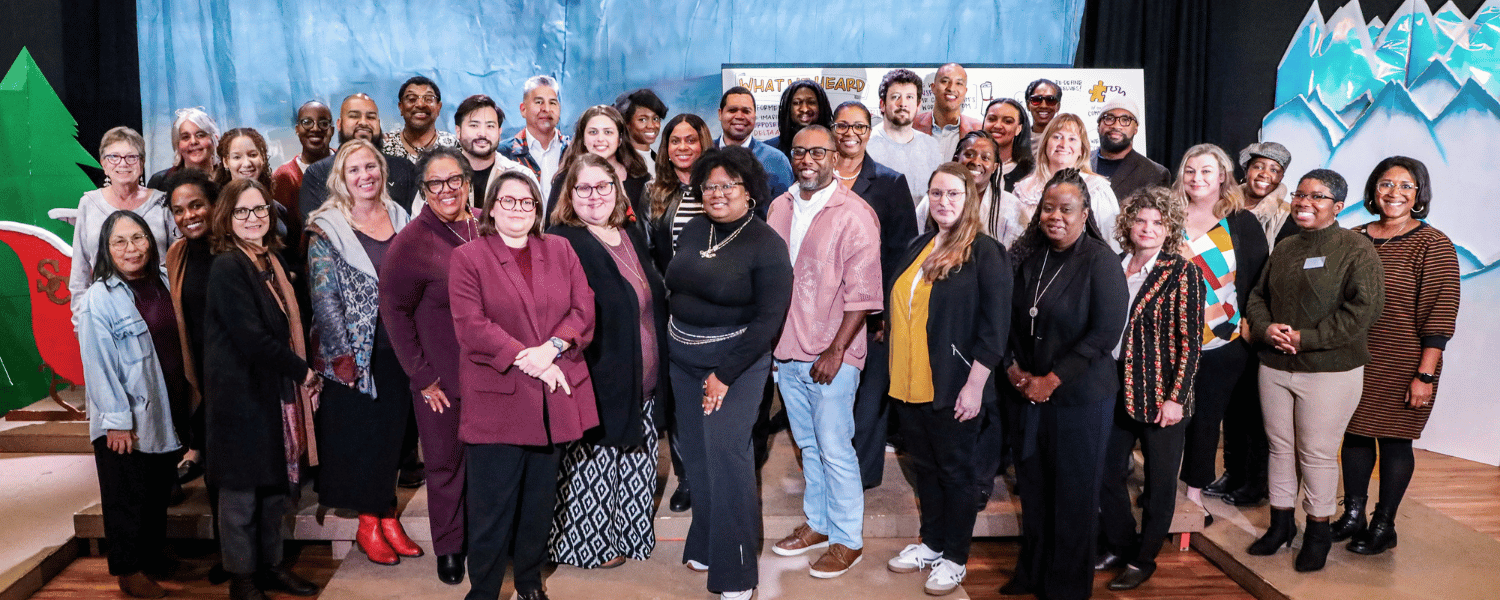
The Arkansas-Mississippi Delta has long been a cradle of artistic and cultural expression, shaped by its history, people, and landscapes. The Delta region encompasses multiple states around the Mississippi River, including portions of Mid-America Arts Alliance’s region of Arkansas and Missouri.
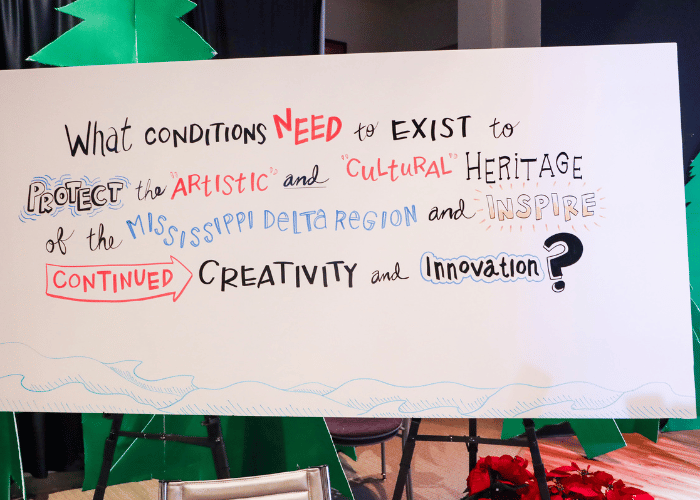
Delta Arts and Cultural Ecosystem Initiative (DACEI) visual notetaking by Kimiko Johnson, graphic facilitator, Collective Next. Photography by R.A. Howard.
As communities navigate the challenges of preservation and innovation in the Delta, a fundamental question emerges:
What conditions need to exist to protect the artistic and cultural heritage of the Delta region and inspire continued creativity and innovation?
This question guided a recent convening of artists, cultural leaders, and advocates, including a team from Mid-America Arts Alliance. From communities with populations ranging from 700 to 500,000, these leaders gathered at the first Delta Arts and Cultural Ecosystem Initiative (DACEI) at DeltaARTS in West Memphis, Arkansas, to discuss the future of the region’s creative ecosystem.
Those discussions revealed key opportunities, challenges, and action steps needed to sustain the artistic vibrancy of the Arkansas-Mississippi Delta.
Opportunities and Next Steps
- Expanding Grant Opportunities beyond Nonprofits: Arts-centric businesses, especially LLCs and sole proprietorships, play a significant role in shaping the cultural and economic landscape but struggle to access necessary resources. Many of these artistic ventures are excluded from funding opportunities and economic development conversations. Expanding grant and funding opportunities to include these art-centric businesses can drive sustainability and innovation.

Arts leaders at DACEI. Photography by R.A. Howard.
- Partnering for Innovation: Some of the most groundbreaking ideas often emerge from small, deeply connected organizations that are nimble and resourceful enough to experiment with new programs and approaches. However, once these initiatives prove successful, they are too often co-opted by larger organizations with greater resources, effectively stifling innovation rather than scaling and supporting it. To nurture and sustain these ideas, partnerships should be forged between small and rural organizations—who have direct access to the people and issues they aim to address—and larger institutions that can provide funding, strategic partnerships, and broader networks of support.
- Investing in Creative Ecosystems: As investing in these networks ensures continued artistic innovation, how can this be expanded to other creative industries? Just as the Delta has supported the rise of numerous musicians due to a strong creative network, a similar ecosystem exists for writers. Investing in these networks ensures continued progress.
- Building Sustainable Funding Models: While COVID-19 temporarily broadened access to grant funding, stricter requirements have returned. Gates went up, effectively limiting opportunities for smaller organizations. Additionally, the Mississippi Delta lacks a strong philanthropic infrastructure, with churches being a notable exception. By fostering new funding collaborations and investment models, arts organizations can build financial resilience and expand creative impact.
The discussions also highlighted how arts and culture intersect with health care, tourism, advocacy, and workforce training, emphasizing the need for a multidisciplinary approach to arts funding, accessibility, and sustainability.
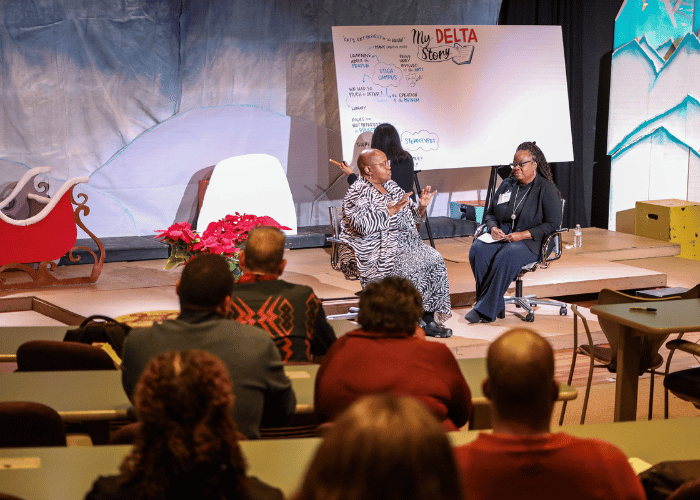
My Delta Story, a conversation with Jean Greene (left), co-director, Utica Institute Museum, in conversation with Brazier Watts (right), Leaders of Color Fellowship alumna. Photography by R.A. Howard.
Actionable Steps for the Future
As these conversations continue to unfold, it is clear that protecting and growing the creative economy in the Arkansas-Mississippi Delta requires more than recognition—it needs action. By strengthening connections between grassroots organizations and larger institutions, rethinking funding structures, and leveraging existing networks, we can build a more inclusive and resilient cultural ecosystem.
Here are a few actions highlighted during the DACEI convening that offer practical ways to support long-term artistic innovation:
- Amplify Creative Communities: Lift up the contributions of local artists and cultural leaders, particularly those from underrepresented communities.
- Leverage Partnerships and Data-Sharing: Foster collaboration among local, state, regional, and national arts organizations.
- Explore Workshops and Collaborations: Engage with experts and thought leaders to develop sustainable models for community-driven arts initiatives.
- Investigate Philanthropic Models: Research alternative funding structures to support long-term investment in the Delta’s creative economy.
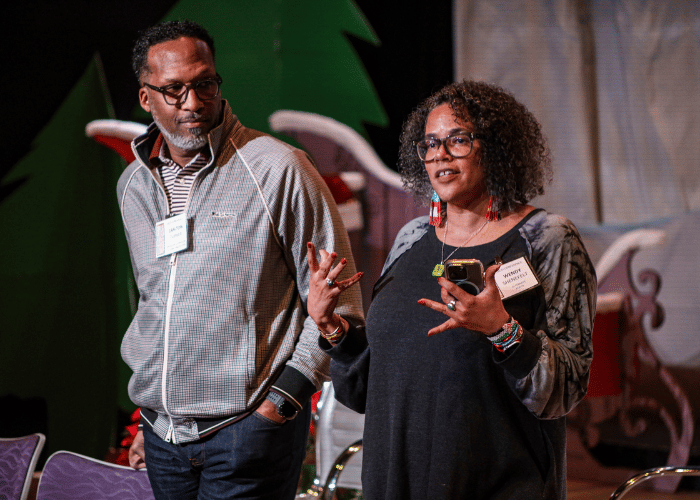
Carlton Turner (left), co-founder and co-director, Mississippi Center for Cultural Production, in conversation with Wendy Shenefelt (right), co-executive director of Alternate ROOTS. Photography by R.A. Howard.
Moving Forward: Strengthening the Cultural Ecosystem
The Delta’s rich cultural heritage requires intentional efforts to protect, sustain, and grow its artistic legacy.
By recognizing the economic impact of the arts, expanding funding opportunities, and fostering meaningful collaborations, the region can continue to be a powerhouse of creativity and innovation, all while preserving the Delta’s artistic traditions for generations to come.
Header photography: Leaders gathered at the first Delta Arts and Cultural Ecosystem Initiative (DACEI). Photography by R.A. Howard.


